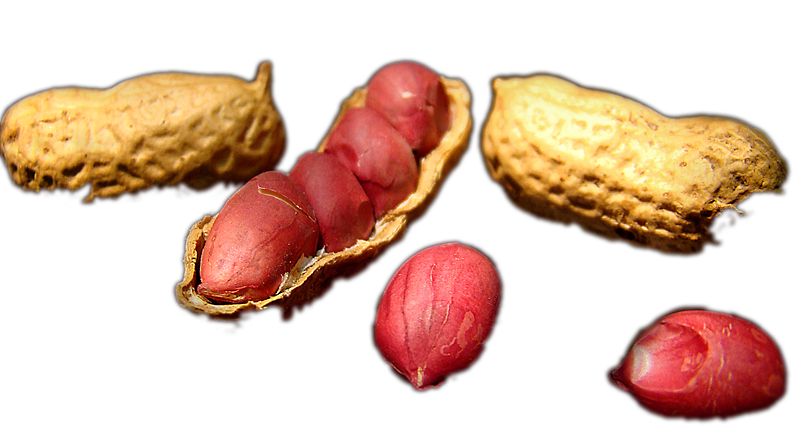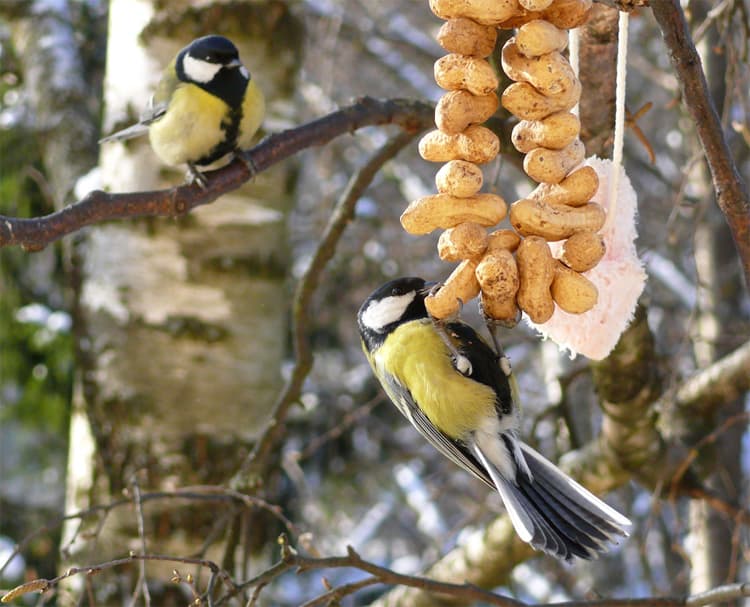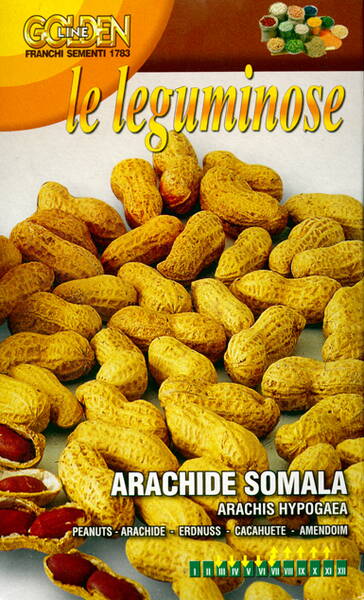Your shopping cart is empty!
Peanut "Somala"
Peanut "Somala" (Monkey nut) - Arachis hypogaea L.
How to grow peanuts in our climatic conditions? And in general, is it possible?
What are the features of peanut farming? How to get a good harvest, and what are the reasons for the failures when trying to grow it?
The peanut is not a new and unusual plant for us, but, nevertheless, in the northern countries it is still a rarity.
This is a southern plant, but experiments with cultivation turned out to be successful: in the conditions of the middle lane, the harvest in the first year is (depending on the weather) 10-15 beans and, accordingly, 30-40 nuts per bush.
Peanuts are planted with germinated seeds (it does not ripen in our open ground), but it grows well in a greenhouse between tomatoes (bushes are only 15 cm low), you can plant them on a regular garden bed and cover with a film. Of course, the harvest will not be as good as in the south, but it is very interesting to get a harvest from such a southern, almost tropical plant!
Peanut is an annual herbaceous plant of the legume family, forming a small bush of a branched stem and parotid leaves, the flowers are small, yellow, after flowering a bean is formed - non-cracking, with a constriction and a rough peel; the seeds contained in it are called "peanuts".
For their formation, conditions that are not quite usual for legumes are necessary: flowering occurs like in other plants, but the flowers live only one day.
They bloom in the morning, then pollination occurs, and by the evening they already dry up, so often flowering is almost imperceptible, but nevertheless, up to 200 flowers are formed on one plant per season, for the fertilization of which special conditions are also required, therefore, only a small part of the flowers is formed ovary.
The development of the ovary is particularly interesting.
After fertilization, they lie on the soil and begin to "dig in", the development of the fetus occurs only in the ground, the ovaries remaining on the surface do not develop.
Therefore, two important conditions for their development should be observed - loose light soil and periodic hilling 2-3 times per season.
Peanuts come from South America, where their wild species grow as perennials, but in our country, of course, the seeds do not winter in the soil.
The origin determines the following conditions for the normal growth of peanuts: a sufficiently high temperature and medium humidity (because at low temperatures the flowers can fall off, and at high humidity they can be affected by fungal diseases). Plants develop well at temperatures from +20 to +27°C (below +15° - they stop growing, and above +30° - growth also stops).
About 700 species of cultivars of peanuts are distributed in the world, and although its main plantings are concentrated in the southern regions, some enthusiastic and experienced gardeners grow it in more northern latitudes.
The most common problem is that peanut seeds do not germinate well. There may be various reasons for this, related to damage to the seeds by insects, birds, or planting with dry seeds.
How to grow peanuts in our climatic conditions? And in general, is it possible?
What are the features of peanut farming? How to get a good harvest, and what are the reasons for the failures when trying to grow it?
The peanut is not a new and unusual plant for us, but, nevertheless, in the northern countries it is still a rarity.
This is a southern plant, but experiments with cultivation turned out to be successful: in the conditions of the middle lane, the harvest in the first year is (depending on the weather) 10-15 beans and, accordingly, 30-40 nuts per bush.
Peanuts are planted with germinated seeds (it does not ripen in our open ground), but it grows well in a greenhouse between tomatoes (bushes are only 15 cm low), you can plant them on a regular garden bed and cover with a film. Of course, the harvest will not be as good as in the south, but it is very interesting to get a harvest from such a southern, almost tropical plant!
Peanut is an annual herbaceous plant of the legume family, forming a small bush of a branched stem and parotid leaves, the flowers are small, yellow, after flowering a bean is formed - non-cracking, with a constriction and a rough peel; the seeds contained in it are called "peanuts".
For their formation, conditions that are not quite usual for legumes are necessary: flowering occurs like in other plants, but the flowers live only one day.
They bloom in the morning, then pollination occurs, and by the evening they already dry up, so often flowering is almost imperceptible, but nevertheless, up to 200 flowers are formed on one plant per season, for the fertilization of which special conditions are also required, therefore, only a small part of the flowers is formed ovary.
The development of the ovary is particularly interesting.
After fertilization, they lie on the soil and begin to "dig in", the development of the fetus occurs only in the ground, the ovaries remaining on the surface do not develop.
Therefore, two important conditions for their development should be observed - loose light soil and periodic hilling 2-3 times per season.
Peanuts come from South America, where their wild species grow as perennials, but in our country, of course, the seeds do not winter in the soil.
The origin determines the following conditions for the normal growth of peanuts: a sufficiently high temperature and medium humidity (because at low temperatures the flowers can fall off, and at high humidity they can be affected by fungal diseases). Plants develop well at temperatures from +20 to +27°C (below +15° - they stop growing, and above +30° - growth also stops).
About 700 species of cultivars of peanuts are distributed in the world, and although its main plantings are concentrated in the southern regions, some enthusiastic and experienced gardeners grow it in more northern latitudes.
The most common problem is that peanut seeds do not germinate well. There may be various reasons for this, related to damage to the seeds by insects, birds, or planting with dry seeds.


Peanut, Goober, Groundnut, Pindar, Monkeynut.












